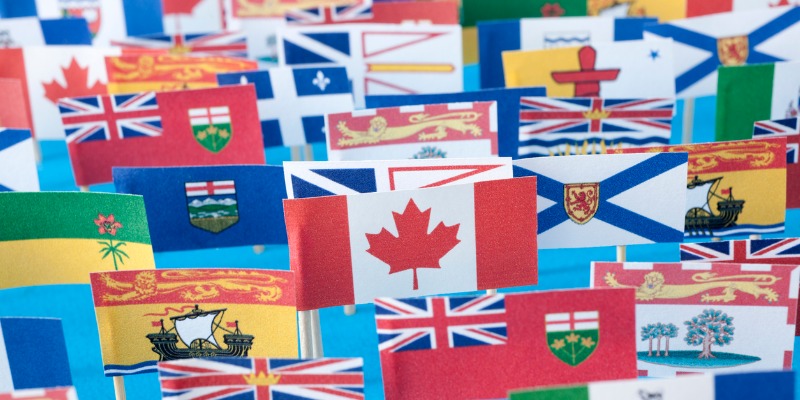Are some provinces and states too big to succeed?

Is there an ideal size for provinces in Canada or states in America? We know for businesses and companies, size affects efficiency. Being either smaller or larger than an optimum size results in higher costs of production and less effective management. Readers who recall their economics class may remember this idea being discussed in terms of economies and diseconomies of scale. Again, does this same logic apply to subnational jurisdictions such as provinces and states?
Because provincial and state governments produce a wide variety of goods and services for their constituencies, it seems plausible that a similar relationship would exist. If so, provinces or states that are either too small or too large will be less efficient in producing these goods and services. One factor that makes them different from private businesses, however, is that decisions are made within a democratic political framework, and size may also influence the effectiveness of democratic decision-making. Consider how inefficient and ineffective it would likely be, for example, if the entire population of Canada was divided into only two provinces, or alternatively into a thousand small provinces.
While research shows that cities of around 3 million people are the most effective and fastest-growing, we heretofore had no evidence on this issue for the size of provincial and state governments. But in my new study for the Fraser Institute, I use data on 158 provinces and states from Canada, Argentina, the United States, Australia, Germany, India and Mexico to search for an answer, and it turns out to be around 9.5 million people. I also separately considered geographic size, and while the results are less clear, there seems to be disadvantages once a jurisdiction is larger than 0.4 million square kilometres (0.158 million square miles).
My study uses data from the Fraser Institute’s Economic Freedom of North America report (and several other reports modelled after it). The main subnational index measures the quality of economic policies in each province or state based on measures of government spending, taxation and regulation. Other research has demonstrated a close relationship of this index with the levels of economic growth and entrepreneurship, so my results not only suggest that provinces and states of around 9.5 million people (and 0.4 million square kilometres) have higher economic freedom, but also have an advantage at generating growth and prosperity for their citizens.
In that index, Canada's lowest-ranking province (Quebec) is also its largest by area and second-largest by population, while the two U.S. states with the largest area and population are among the four lowest ranking U.S. states in the index. Specifically, states with large populations or geographic sizes such California, Alaska and New York are all in the bottom five ranking U.S. states in the index. The study’s results suggest these correlations are not coincidental.
The bigger implication is that some provinces and states have simply become too large to be optimally successful. For example, California’s population has grown from 7 million in 1940 to almost 40 million today. As a result, initiatives to split California into multiple smaller states have gained some popular and political momentum. This new study suggests that dividing the Golden State into perhaps four separate states might improve economic policy and faster economic growth for each new state.
We’ve all heard that some private-sector businesses are “too big to fail,” but it appears that some provinces and states have become too big to succeed, economically speaking at least.

